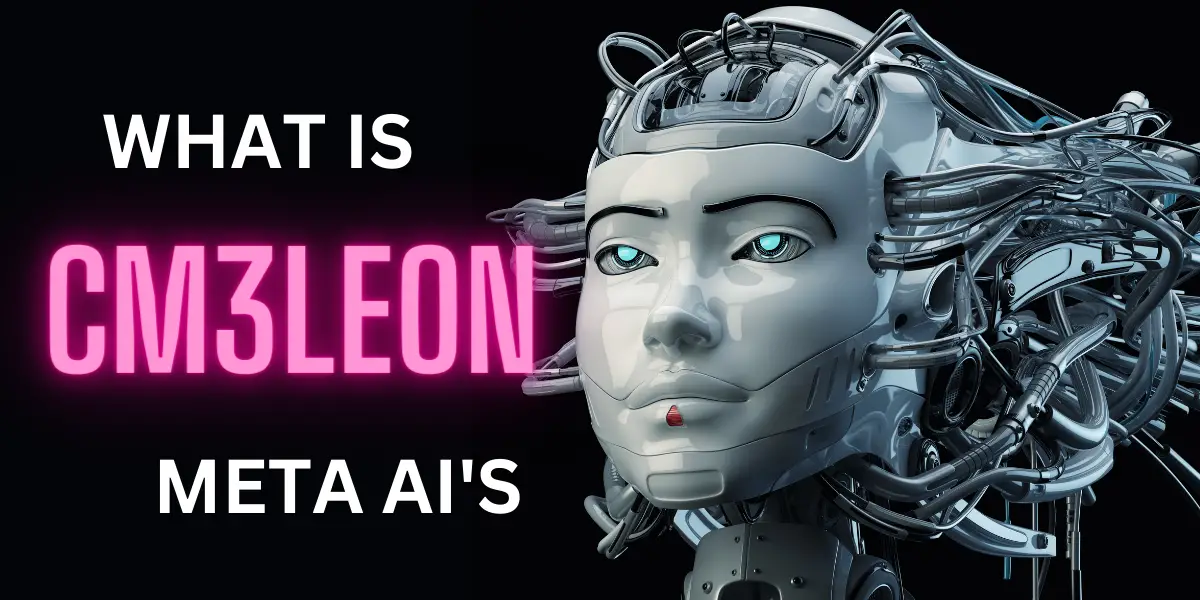What is CM3leon:Meta AI's Generative Model for Text And Images

Artificial Intelligence (AI) has been making significant strides in recent years, with advancements in machine learning and deep learning leading to the development of increasingly sophisticated models. One such breakthrough is the introduction of CM3leon, a state-of-the-art generative model for text and image generation, by Meta AI. This article delves into the details of CM3leon, its key features, performance across tasks, and its potential release date.
Table of Contents
What is CM3leon?
CM3leon, pronounced as “chameleon,” is a cutting-edge generative AI model that boasts the unique capability of both text-to-image and image-to-text generation. This innovative model is set to revolutionize the field of AI and open up new possibilities for businesses across industries. CM3leon is the first multimodal model of its kind, developed using a recipe adapted from text-only language models. It undergoes a comprehensive two-stage training process, including a large-scale retrieval-augmented pre-training stage and a second multitask supervised fine-tuning (SFT) stage. By leveraging these advanced training techniques, CM3leon achieves exceptional performance in generating coherent imagery that aligns closely with the input prompts.
What is Meta AI?
Meta AI, formerly known as Facebook AI, is the artificial intelligence research division of Meta Platforms Inc. It is committed to advancing the state of AI through open research and collaboration, making significant contributions to the field. Meta AI has been at the forefront of AI innovation, developing state-of-the-art AI models and contributing to various areas of AI research, including computer vision, natural language processing, and robotics.
Key Features of CM3leon
CM3leon comes with several key features that set it apart from other AI models:
- Efficiency: CM3leon requires only five times the computing power and a smaller training dataset compared to previous transformer-based methods. This efficiency makes it a potentially more accessible AI model for text and image generation.
- Two-stage training process: CM3leon undergoes a unique two-stage training process. The first stage involves a large-scale retrieval-augmented pre-training, and the second stage involves a multitask supervised fine-tuning. This comprehensive training process enables CM3leon to generate coherent imagery that aligns closely with the input prompts.
- Versatility: CM3leon is capable of both text-to-image and image-to-text generation, making it a versatile tool for various applications.
- Performance: In comparison with the widely utilized image generation benchmark, zero-shot MS-COCO, CM3leon achieved an impressive FID (Frechet Inception Distance) score of 4.88, establishing a new state-of-the-art in text-to-image generation.
How CM3leon performs across tasks?
CM3leon has demonstrated exceptional performance across various vision-language tasks:
- Visual question answering: CM3leon excels in tasks that involve answering questions based on visual content, demonstrating a deep understanding of both text and images.
- Long-form captioning: The model is capable of generating detailed and accurate descriptions of images, showcasing its proficiency in understanding and interpreting visual content.
- Text-guided image generation and editing: CM3leon can generate and edit images based on text prompts, offering a new way for users to interact with and manipulate visual content.
Despite being trained on a dataset of only three billion text tokens, CM3leon’s zero-shot performance compares favorably to larger models trained on more extensive datasets.
Also read:Al Picture Generator: Transform Your Visual Experience
When will CM3leon be released?
Despite the excitement around CM3leon, Meta AI has decided not to release the model code, citing concerns about potential misuse. While this decision has sparked some controversy in the AI community, it underscores the importance of balancing openness with responsibility in AI research. Meta AI has expressed its commitment to exploring the boundaries of multimodal language models and plans to release more models in the future.
Conclusion
The introduction of CM3leon by Meta AI signifies a significant breakthrough in AI technology for text and image generation. This innovative model presents businesses with the opportunity to leverage advanced generative capabilities, enhancing creativity and driving new applications. With its impressive performance and efficiency, CM3leon has the potential to reshape the market landscape, empowering organizations to unlock new possibilities and harness the full potential of generative AI models.
As an AI expert, I believe that CM3leon represents a significant step forward in the field of AI. Its unique capabilities and efficiency make it a promising tool for a wide range of applications. However, the decision not to release the model code highlights the ongoing challenges in AI research, particularly around ethical considerations and potential misuse. It’s crucial for the AI community to continue discussing these issues and working towards solutions that balance openness, innovation, and responsibility.

